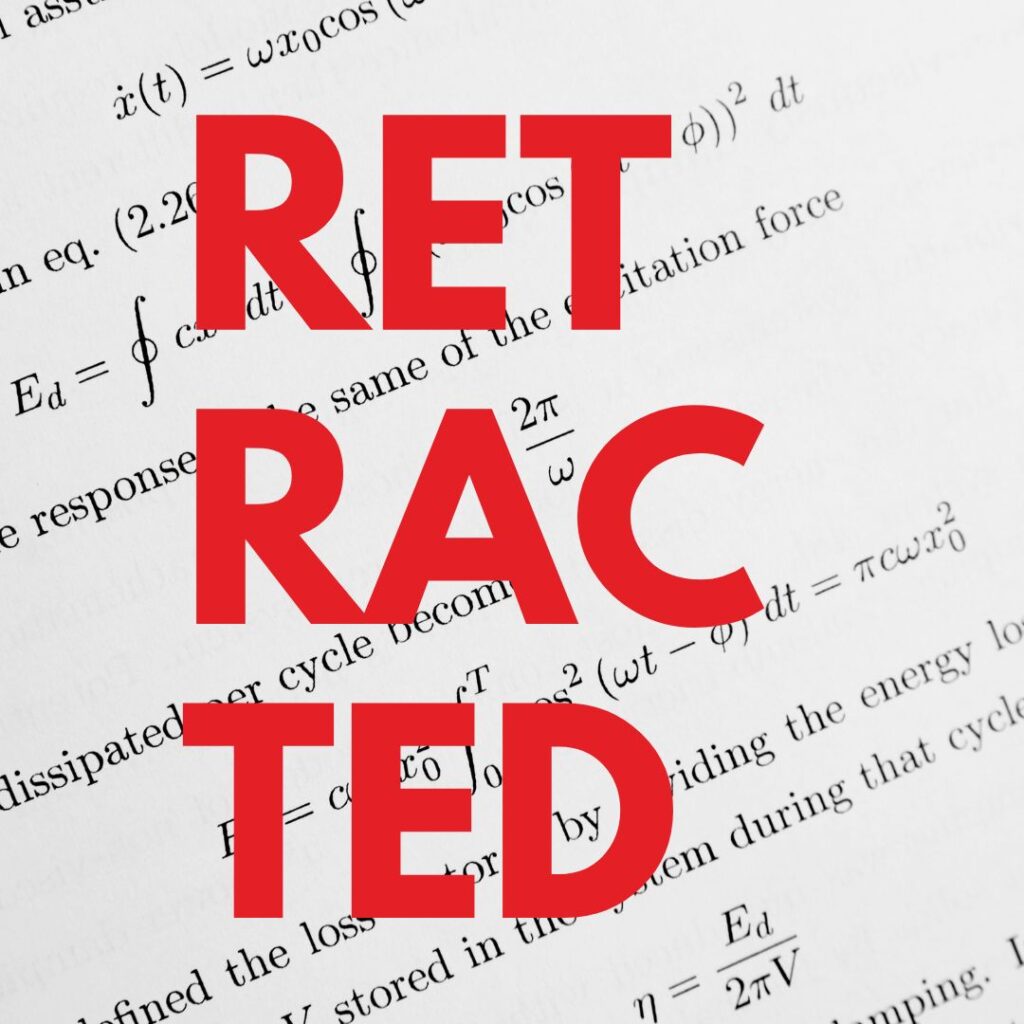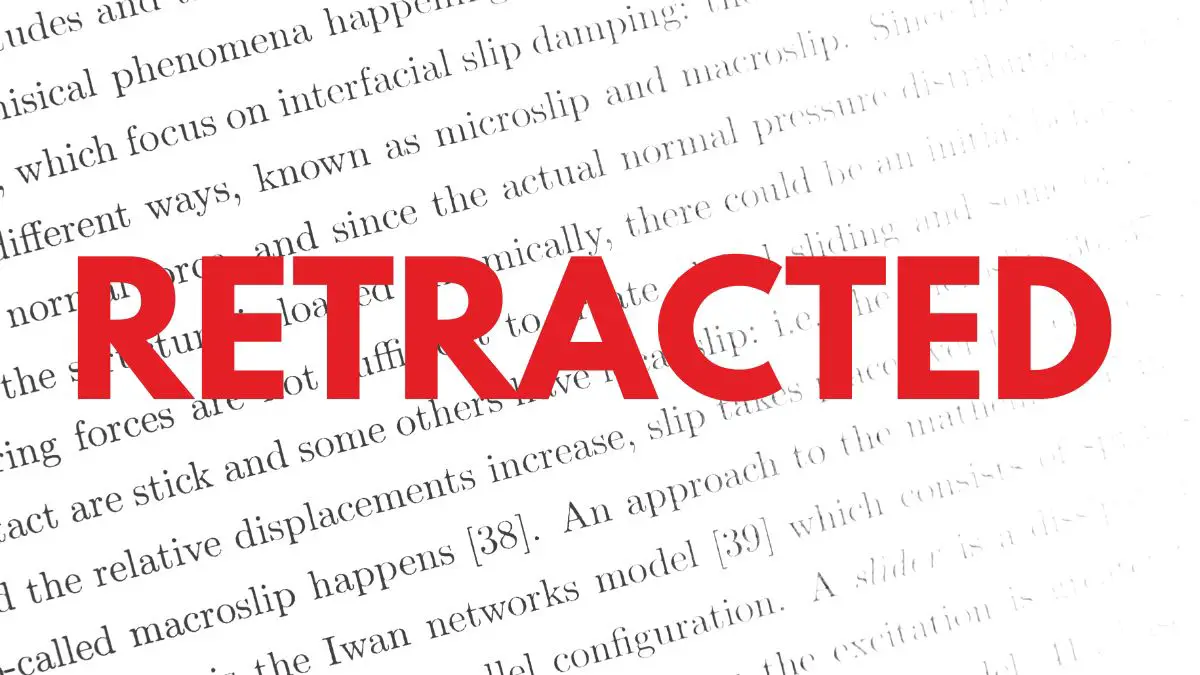Table of Contents
- Introduction
- What is Article Retraction?
- The Role of Article Retraction in Maintaining Scientific Integrity
- The Process of Article Retraction
- The Impact of Retractions on the Scientific Community
- Conclusion
Introduction
This write-up discusses article retraction in academic publishing and its necessity in maintaining scientific integrity.
Scientific research plays a pivotal role in expanding our understanding of the world around us. From new medical treatments to innovative technologies, the discoveries made through science enormously impact our lives. However, for science to serve its purpose effectively, the research process must uphold the highest standards of integrity.

A key mechanism for maintaining integrity in science is the retraction of published articles. Article retraction occurs when a scientific journal withdraws a published paper because flaws have been identified that fundamentally undermine the paper’s findings.
These flaws may range from honest errors to outright scientific misconduct. Whatever the cause, retractions help correct the scientific record and prevent the spread of misinformation.
While no scientist wants to have their work retracted, article retractions play a vital role in safeguarding the credibility of science. They signify that misconduct and improper research practices will not be tolerated.
Retractions also reinforce the self-correcting nature of science by allowing valid evidence to come to the forefront. This introduction provides a high-level overview of article retraction and why it matters for scientific integrity. The sections that follow will explore this topic in greater depth.
What is Article Retraction?
An article retraction occurs when a published scientific paper is removed or withdrawn from a journal. There are several reasons why a journal may retract an article:
Errors
If significant errors are found in a published paper’s data, methodology, analysis, or conclusion, the journal may retract it. These errors can arise from accidental mistakes made by the researchers or even misconduct, such as falsifying data. Retracting the paper ensures inaccurate or misleading science is removed from the literature.
Plagiarism
A reputable scholarly journal should maintain publishing original content free of plagiarism. Articles that are found to contain plagiarized content, including copying from other papers or reusing the authors’ work without citation, may be retracted. This upholds the journal’s standards of originality.
Duplicate Publication
One version may be retracted when a paper has been published in multiple journals without cross-referencing or acknowledgment. Journals avoid publishing duplicate content.
Fake Peer Review
Suppose a journal’s peer review process has been compromised, such as through fake reviewer identities or rigged reports. In that case, publications may be retracted even if no errors were found.
Ethical Concerns
Breaking ethical standards in research, such as not obtaining informed consent from human subjects, is grounds for retraction.
The consequences of retraction are severe for authors, ranging from damaged reputations to lost jobs. However, retractions also serve the scientific community by ensuring the literature accurately reflects quality research. They maintain integrity and public trust in science.
The Role of Article Retraction in Maintaining Scientific Integrity
Article retraction plays a critical role in upholding the credibility and integrity of scientific research. When an article is retracted, it signals to the scientific community and the public that there were serious issues with the research or publication process. Retractions help maintain standards of honesty, accuracy, and rigor in science.
Firstly, retractions serve as a deterrent against dishonest research practices like data fabrication or falsification. Knowing an article can be retracted acts as a strong disincentive for authors to engage in unethical behavior. This helps safeguard the literature against purposeful misinformation.
Secondly, retractions correct inadvertent errors that may have found their way into published articles. Mistakes can occur due to human error, equipment malfunctions, miscalculations, or other unintentional factors. Retracting such articles upholds the reliability of the scientific record.
Lastly, retractions address cases of research misconduct like plagiarism, authorship disputes, or failure to disclose conflicts of interest. Addressing such ethical breaches through retraction maintains standards of integrity in research publication and authorship.
The retraction process allows the scientific community to acknowledge and remedy dishonesty, inaccuracy, or misconduct issues. This makes researchers and the public confident that the scientific literature broadly reflects honest, high-quality research. While no system is perfect, retractions provide an important safeguard for the integrity of science.
The Process of Article Retraction
Retraction of a published scientific article typically begins when an issue with the article is identified. This may occur through continued research on the topic, which brings the findings into question, or when misconduct, errors, or other problems are discovered in the original article. There are a few main steps in the retraction process:
Identification of a Potential Issue
The first stage involves identifying a potential problem with a published article that may warrant retraction. This can occur through various means, such as:
- Discovery of fabrication, falsification, or plagiarism in the article by the authors, institution, or journal editors.
- Identification of unintentional errors or mistakes significant enough to invalidate the findings.
- Failure to reproduce the study results or conclusions.
- Complaints were raised about the validity of the article and its findings.
Investigation and Confirmation
Next, the institution or journal will conduct an investigation to confirm if the issue merits a retraction. This may involve:
- The institution investigating any allegations of misconduct by the author(s).
- Editors or reviewers critically evaluating the claims and methodology.
- Attempts made to reproduce the study or results independently.
Decision to Retract
If the investigation concludes there are grounds for retraction, the authority to retract lies with the editor-in-chief or publisher of the journal. They make the decision to retract after weighing factors such as:
- Severity and type of error or misconduct.
- Reliability of the findings and conclusions.
- Input from reviewers and editorial board on retraction.
Publication of Retraction Notice
Once decided, the journal formally retracts the article by publishing a notice of retraction, which appears online and in print with the original article. This notice states the article is retracted along with the reason for retraction.
Article Indexing Updates
Finally, bibliographic databases update their indexing to show the article is retracted. This signals to readers the article and its findings are invalid or incorrect.
Through this rigorous process, retraction maintains the integrity of scientific literature by identifying and removing invalid or unsubstantiated work. Journals have a vital responsibility to uphold standards by properly retracting flawed articles.
The Impact of Retractions on the Scientific Community
The retraction of a scientific article can have significant repercussions for the broader scientific community. Most notably, it can undermine public trust in science and scientific institutions.
When high-profile articles are retracted due to misconduct or error, it casts doubt on the reliability and objectivity of the scientific process. This is especially true when retractions receive substantial media coverage, shaping public perceptions of science.
Additionally, the retraction of an article that other researchers have built upon can invalidate or weaken those derivative studies. This can set entire research fields back, wasting resources and potentially steering the scientific community in the wrong direction. The time and funding spent on flawed research are difficult to recoup. This demonstrates the crucial importance of scientific integrity in the progress of human knowledge.
On an individual level, researchers whose work is retracted due to misconduct often suffer career-damaging consequences. They may find it difficult to secure funding for future projects or to publish in reputable journals. Their reputation and credibility as scientists can be severely harmed, especially if the retraction receives widespread publicity. However, researchers who self-report errors and voluntarily retract articles are generally viewed more favorably than those who try to conceal mistakes.
The number of article retractions has risen sharply in the past few decades, enabled by new tools to detect plagiarism and image manipulation. While this uptick may reflect improving vigilance, it threatens to erode public trust in science. Researchers, academic institutions, and scientific journals must continue working to uphold rigorous standards and transparency to maintain integrity.
Conclusion
As we have seen, an article retraction is a mechanism to correct the scientific record when errors, misconduct, or dishonesty are discovered in a published paper. The credibility and accuracy of the scientific literature can be preserved by retracting flawed articles.
However, the responsibility is not solely on journal editors to police scientific publications. Researchers must commit to rigorous methodology, transparency, and ethical practices. Peer reviewers are also crucial in critically evaluating manuscripts for problems before publication. Upholding scientific integrity requires the commitment of the entire scientific community.
As consumers of scientific information, we must also value honesty and accuracy in science. When retractions occur, we should withhold judgment about the researchers involved and instead focus on the corrective purpose these retractions aim to achieve. By maintaining scientific integrity, researchers can continue pushing the boundaries of human knowledge for the betterment of society.
In our age of misinformation, science is more important than ever to uphold rigorous standards of truth and integrity. When done appropriately, article retractions can strengthen the scientific process and preserve public trust. Therefore, we must encourage researchers, institutions, and journalists to promote transparency, ethics, and honesty at every stage of the scientific endeavor.

